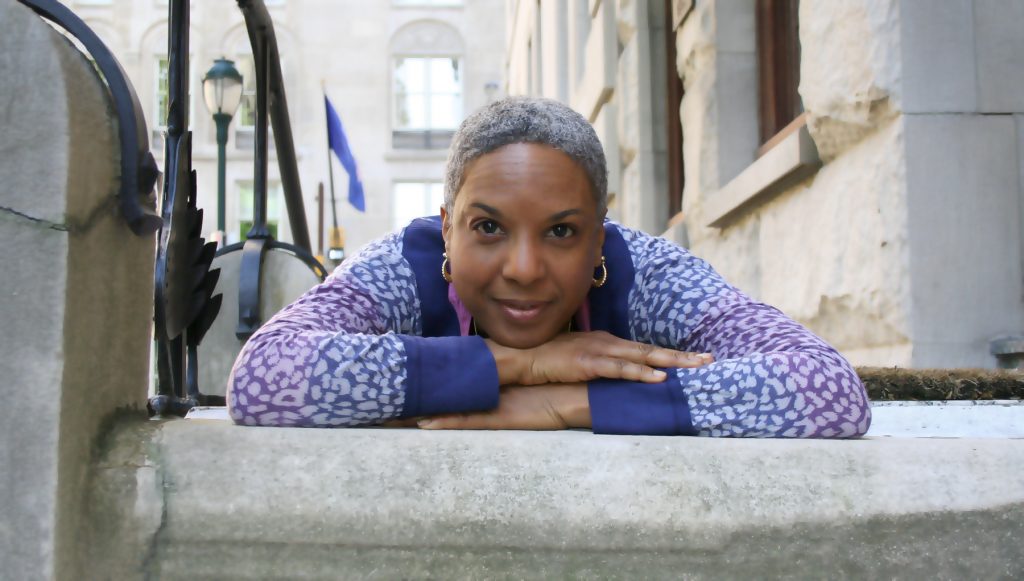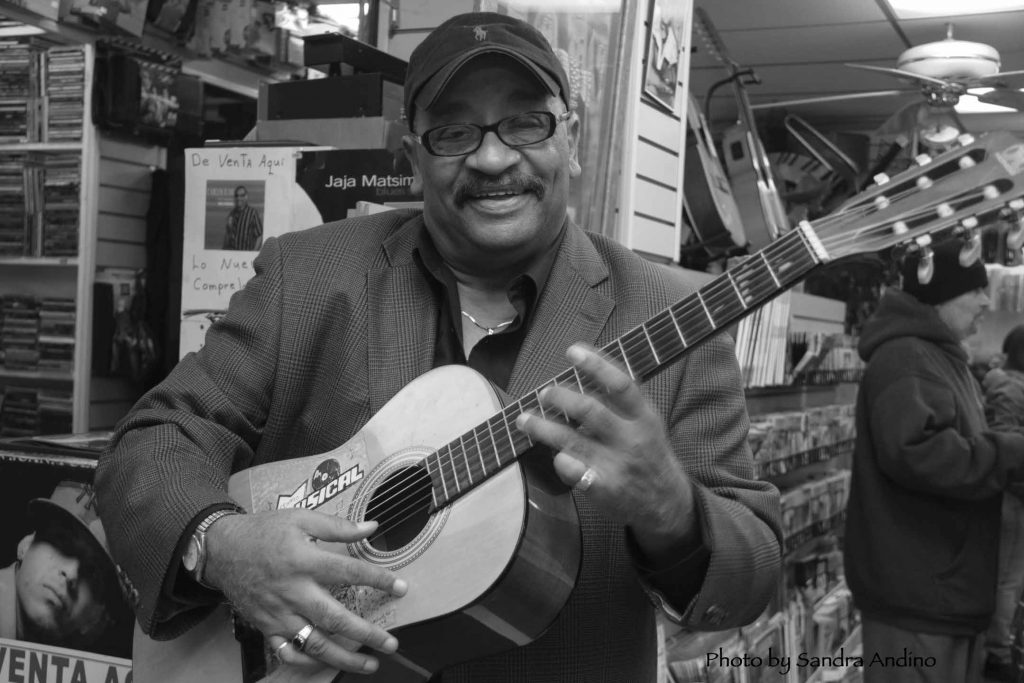A Puerto Rican photographer chronicles the ‘Negraluz’
By Ana Alvarez
For Sandra Andino, it is difficult pinpoint the exact moment she became fascinated with photography. “I remember being a child and there being hundreds of photographs at home,” she says. Her dad, “the photographer of the house” as Andino calls him, loved photography and decided to share his fascination with his daughter. By the age of seven, Andino had her own Kodak Instamatic: “I wanted to photograph everything: my classmates, things at home, etc.”

Sandra Andino
Andino, 50, is a cultural anthropologist and a Puerto Rican faculty member of the Latin American and Latino Studies Program at the University of Pennsylvania.
She also specializes in black-and-white photography and is the founder of Negraluz Productions. Aside from Andino being an educator, Negraluz is her main artistic endeavor and photography project.
Negraluz’ aim is to “present and represent visual images of Latinos of African descent, heritage, and ancestry in a positive light as history makers of our community, society, and the world,” as Negraluz’ website describes its mission.
Andino chose to juxtapose the Spanish words “negra” or black and “luz” or light in order to signal that blackness can bring enlightenment and consciousness to those within the Afro-Latino community (a community that she is a part of) who are trying to reconcile with their identity:
“In Hispanic culture, there are many negative connotations when the word ‘negro’ or ‘negra’ is utilized,” said Andino. “I wanted to do sort of a play on words and juxtapose these two words to demonstrate how blackness can be an opening– a path. To me it meant that blackness is not a negative thing but something very positive that can create awareness.”
Within Puerto Rican culture, the term “black” is constantly utilized with negative connotations and even those who have darker skin tones are referred to as “trigueño” which does not directly translate to black, but instead means “tan.”
Historically, the acknowledgement of African heritage within Hispanic cultures has been dismissed. Use of the term “Afro-Latino” itself is quite recent.
For Andino, black-and-white photography turned out to be the ideal method for acknowledging the role of African heritage within Latino identity.
In her last exhibit, titled “Afro-Latino in Philadelphia: Stories from El Barrio,” she presented eight black-and-white portraits of Philadelphians who identify as Afro-Latinos. Among the subjects were academics, entrepreneurs, artists and educators. These 30×44-inch portraits adorned the walls of El Taller Puertorriqueño’s Lorenzo Homar Gallery in North Philadelphia where visitors could also listen to recorded excerpts of Andino’s interviews with her subjects:
“I learned so much from these interviews and that’s what I wanted to share with viewers– excerpts that may reveal something more about the subjects in the exhibit.”
For Andino, this exhibit combines her previous history with black-and-white photography with her journey of becoming aware of her identity as an Afro-Latina. As an undergraduate in the University of Puerto Rico, Andino decided to take a course in basic black-and-white photography where she also learned how to develop film:
“Through developing my own film, I learned a lot about how light and darkness works. I believe that through black and white you learn to pay attention to details, to really see through the lens and to focus more in how light hits various subjects.” said Andino. “You go into the darkroom knowing that you’re going to be developing shades of white, black and grey. You begin to think in those terms.”

Andino’s photo of Jesse Bermudez
After taking the course, Andino was given a scholarship by the Arts League of San Juan which allowed her to continue her studies of black-and-white photography. During this time Andino became fascinated with the work of renowned French photographer Henri Cartier-Bresson and with the work of other photographers such as Ansel Adams and Jesse Castellano:
“I got very involved in the world of black and white,” said Andino “I loved how black-and-white photographers could present images that conveyed various emotions– it said so much about the subject and about the emotions the photographer wished emphasize. All I wanted to do was black and white for years.”
At the 2009 Arturo A. Schomburg Symposium, where Andino was part of a panel of women that sought to discuss Afro-Latinas and activism, she became interested in how the definition of what is Afro-Latina fluctuated:
“I saw and I heard all the different versions of what it meant to be Afro-Latina– from the opinion of ‘Yes, I am black because I have kinky hair’ and the typical image about black people to other opinions such as ‘Well, we don’t necessarily have to be phenotypically (observably) black to consider yourself a woman of African heritage.’”
To Andino’s surprise, the women on the panel who had the darkest skin tones were the women who seemed less aware of their African heritage. When observing their participation in the panel, Andino questioned herself:
“How can these women talk about themselves in the way that others view them, through stereotypes? It’s astonishing that people with strong African ancestry do not see themselves as black nor recognize their blackness as something positive, right?”
Evelyn Laurrent-Perrault, former visiting professor at Bryn Mawr College, was sitting next to Andino in the panel when she suggested to her to create a project that built upon her experience
in the panel.
Following Laurrent-Perrault’s advice, Andino applied for a grant from the Leeway Foundation which allowed her to begin work on her exhibit for El Taller Puertorriqueño.
This exhibit provided an opportunity for Andino to come back to black-and-white photography and also accomplish the goal behind Negraluz: to create awareness of the connection that exists between Latinos and their African heritage:
“I wanted to provide visibility and a space, to demonstrate that Afro-Latinos in the city exist.”
